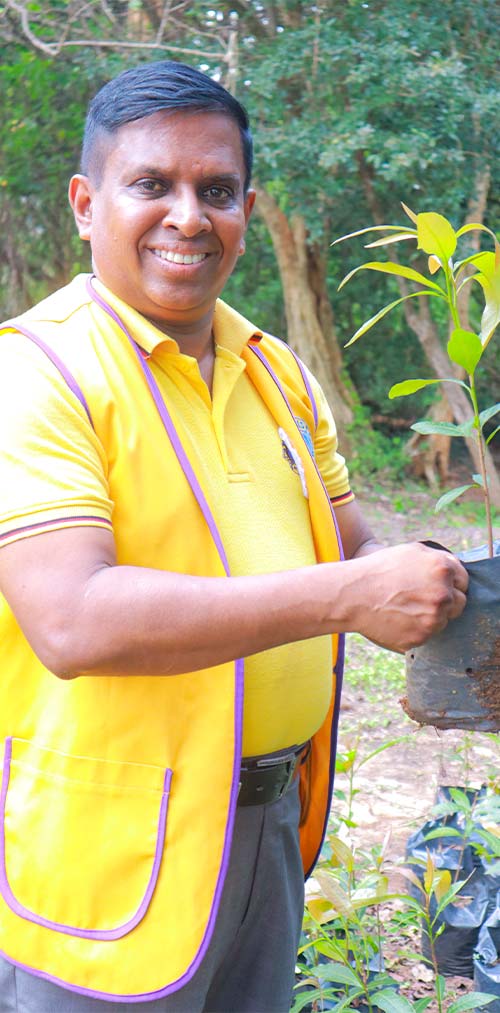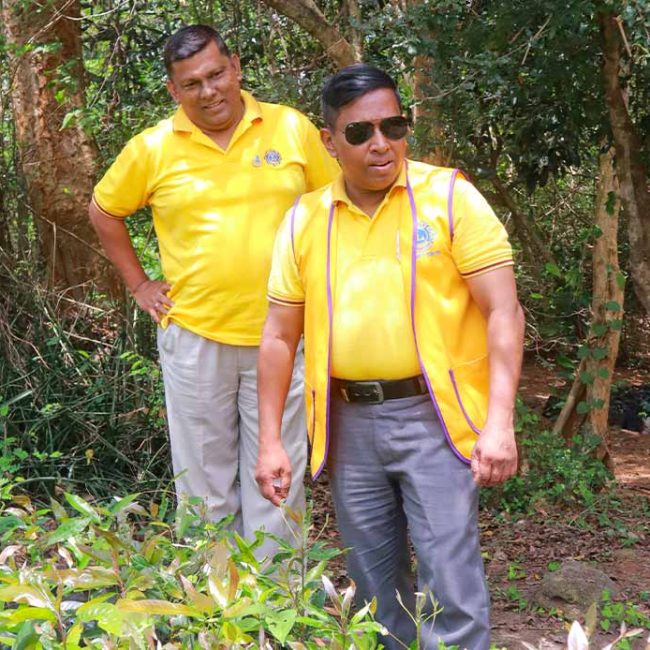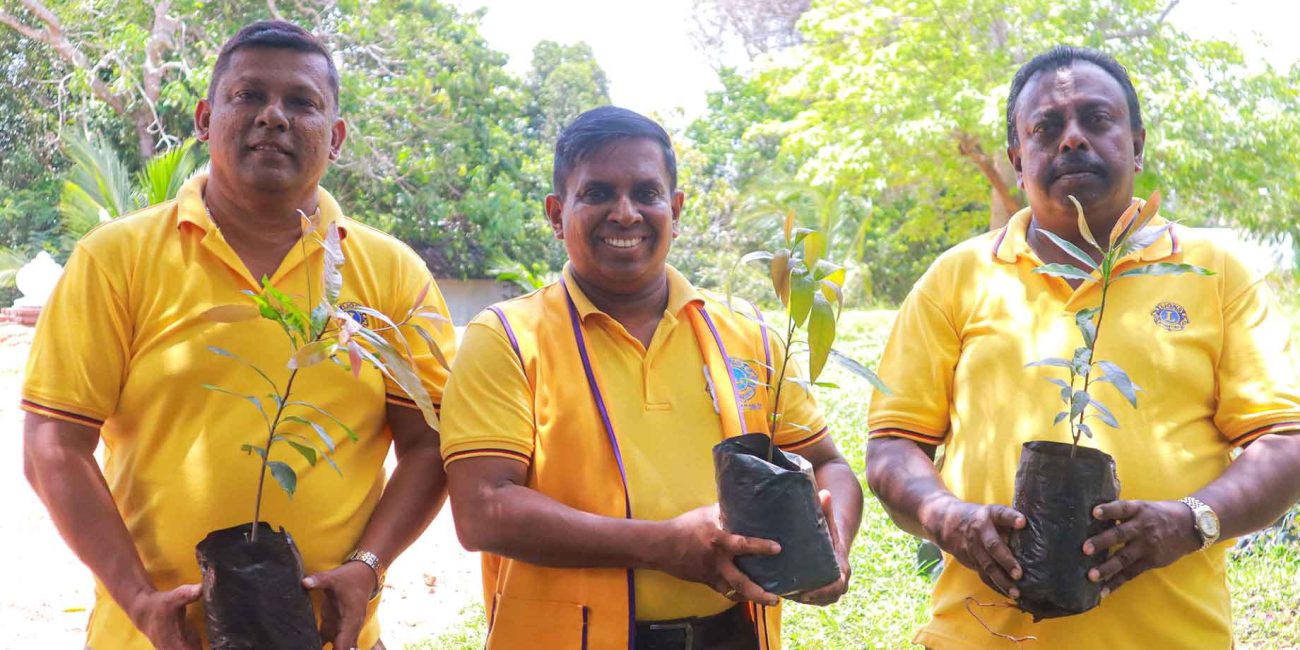Praana
Fueling hope, building health, join praana’s mission today…
Praana” (Prana, Prāṇā, Prāṇa) is a fundraising project operating under Lions District 306C1 Sri Lanka, with the aim of donating $1 to plant 100,000 “Mee Trees” and save 40,800 lives annually. The tropical tree Madhuca Longifolia, also referred to as the Mahua tree, is an indigenous species to the Indian subcontinent, belonging to the Sapotaceae family. The tree holds significant cultural importance in various parts of India due to its multiple purposes and benefits.
ADVANTAGES OF “MEE” TREE PLANTATION
1. Madhuca longifolia is a great carbon sink for sequestering carbon. During photosynthesis, the tree takes in carbon dioxide from the environment and stores it in its biomass, which includes its trunk, branches, leaves, and roots. This aids in limiting climate change by reducing the amount of greenhouse gases in the atmosphere.
2. Soil preservation: Madhuca long folia’s large root system aids in preventing soil erosion. The risk of soil erosion brought on by wind or water is decreased by the roots’ ability to keep the soil particles together. This is especially advantageous where there is a high likelihood of heavy rain or where the land is prone to erosion.
3. Support for biodiversity: Madhuca longifolia offers a home to a variety of creatures, including birds, insects, and small animals. Bees and butterflies are attracted to the tree’s blossoms, which helps pollinate the nearby plant species. Madhuca longifolia can increase total biodiversity in an ecosystem.
4. Medical Value : Madhuca longifolia is highly valuable in terms of medicine. The tree’s blossoms, bark, and seeds have all historically been employed in Ayurvedic medicine for their healing properties. The tree includes substances that are beneficial to human health and wellbeing because they are antibacterial, anti-inflammatory, and antioxidant.
5. Renewable resource: Madhuca longifolia is a valuable source of renewable resources from an economic standpoint. The oil-rich seeds the tree produces can be harvested and used for cooking, manufacturing soap, and possibly even as a biofuel. Additionally used to manufacture the popular alcoholic beverage “mahua” in some areas, the blooms boost the local economy.
6. Shade and microclimate improvement: The dense canopy of the medium- to large-sized tree Madhuca longifolia provides shade and improves the microclimate. Because of the shade its large leaves provide, the soil temperature is lowered and excessive evaporation is prevented. Other plants growing beneath its canopy gain advantages from this shade as well since it creates a cooler and more hospitable environment for them.
The Sri Lankan economy can gain a number of advantages from the planting of Madhuca longifolia trees. The following are some possible benefits:
1. High-quality timber is produced by Madhuca longifolia, sometimes referred to as the butter tree or mahua. These trees yield wood that can be used in a variety of fields, including building, furniture production, and handicrafts. Creating a sustainable timber business may boost GDP, create jobs, and increase export opportunities.
2. Non-timber Forest Products: Madhuca longifolia trees can be used to produce a number of non-timber forest products that are valuable commercially. The tree’s blossoms are used to make edible oil, which is then processed and sold either domestically or abroad. Madhuca longifolia oil is produced from the seeds and utilized in traditional medicine, cosmetics, and cookery, giving local businesses a boost.
3. Jobs & Rural Livelihoods: Madhuca longifolia plantations can be planted and managed to generate employment opportunities, especially in rural areas where the tree thrives. This could lower rural-urban migration, lessen poverty, and enhance local populations’ standard of living. Additionally, it helps small-scale farmers make money and promotes environmentally friendly farming methods.
4. Climate Change Mitigation and Carbon Sequestration: Madhuca longifolia trees are well-known for their capacity to capture atmospheric carbon dioxide. Sri Lanka can help the world’s efforts to reduce climate change by planting these trees. The nation can also take part in carbon trading systems or receive finance for carbon offset projects, both of which can boost economic output.
5. Help to minimize economic crisis
Sri Lanka is facing severe difficulties due to the ongoing economic crisis. As a response to that Mee tree plantation project help to bring dollars in to Sri Lanka which is increase foreign exchange.




